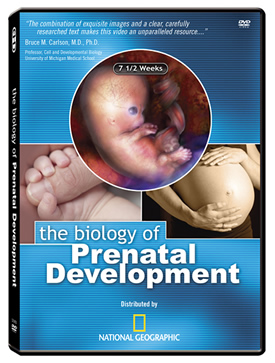Download English PDF Download Spanish PDF Download French PDF What is PDF?
Table of Contents
- THE EMBRYONIC PERIOD (THE FIRST 8 WEEKS)
-
- EMBRYONIC DEVELOPMENT: THE FIRST 4 WEEKS
-
- Chapter 3 – Fertilization
- Chapter 4 – DNA, Cell Division, and Early Pregnancy Factor (EPF)
- Chapter 5 – Early Stages (Morula and Blastocyst) and Stem Cells
- Chapter 6 – 1 to 1 1/2 Weeks: Implantation and Human Chorionic Gonadotropin (hCG)
- Chapter 7 – The Placenta and Umbilical Cord
- Chapter 8 – Nutrition and Protection
- Chapter 9 – 2 to 4 Weeks: Germ Layers and Organ Formation
- Chapter 10 – 3 to 4 Weeks: The Folding of the Embryo
- EMBRYONIC DEVELOPMENT: 4 TO 6 WEEKS
-
- Chapter 11 – 4 Weeks: Amniotic Fluid
- Chapter 12 – The Heart in Action
- Chapter 13 – Brain Growth
- Chapter 14 – Limb Buds and Skin
- Chapter 15 – 5 Weeks: Cerebral Hemispheres
- Chapter 16 – Major Airways
- Chapter 17 – Liver and Kidneys
- Chapter 18 – Yolk Sac and Germ Cells
- Chapter 19 – Hand Plates and Cartilage
- EMBRYONIC DEVELOPMENT: 6 TO 8 WEEKS
-
- Chapter 20 – 6 Weeks: Motion and Sensation
- Chapter 21 – The External Ear and Blood Cell Formation
- Chapter 22 – The Diaphragm and Intestines
- Chapter 23 – Hand Plates and Brainwaves
- Chapter 24 – Nipple Formation
- Chapter 25 – Limb Development
- Chapter 26 – 7 Weeks: Hiccups and Startle Response
- Chapter 27 – The Maturing Heart
- Chapter 28 – Ovaries and Eyes
- Chapter 29 – Fingers and Toes
- THE 8-WEEK EMBRYO
- THE FETAL PERIOD (8 WEEKS THROUGH BIRTH)
-
- Chapter 37 – 9 Weeks: Swallows, Sighs, and Stretches
- Chapter 38 – 10 Weeks: Rolls Eyes and Yawns, Fingernails & Fingerprints
- Chapter 39 – 11 Weeks: Absorbs Glucose and Water
- Chapter 40 – 3 to 4 Months (12 to 16 Weeks): Taste Buds, Jaw Motion, Rooting Reflex, Quickening
- Chapter 41 – 4 to 5 Months (16 to 20 Weeks): Stress Response, Vernix Caseosa, Circadian Rhythms
- Chapter 42 – 5 to 6 Months (20 to 24 Weeks): Responds to Sound; Hair and Skin; Age of Viability
- Chapter 43 – 6 to 7 Months (24 to 28 Weeks): Blink-Startle; Pupils Respond to Light; Smell and Taste
- Chapter 44 – 7 to 8 Months (28 to 32 Weeks): Sound Discrimination, Behavioral States
- Chapter 45 – 8 to 9 Months (32 to 36 Weeks): Alveoli Formation, Firm Grasp, Taste Preferences
- Chapter 46 – 9 Months to Birth (36 Weeks through Birth)
Embryonic Development: 6 to 8 Weeks
Chapter 20 6 Weeks: Motion and Sensation
By 6 weeks the cerebral
hemispheres are growing
disproportionately faster than
other sections of the brain.
The embryo begins to make spontaneous and reflexive movements. Such movement is necessary to promote normal neuromuscular development.
The embryo begins to make spontaneous and reflexive movements. Such movement is necessary to promote normal neuromuscular development.
A touch to the mouth area
causes the embryo
to reflexively withdraw
its head.
Chapter 21 The External Ear and Blood Cell Formation
The external ear
is beginning to take shape.
By 6 weeks,
blood cell formation
is underway in the liver
where lymphocytes
are now present.
This type of white blood cell
is a key part
of the developing immune system.
Chapter 22 The Diaphragm and Intestines
The diaphragm,
the primary muscle
used in breathing,
is largely formed by 6 weeks.
A portion of the intestine
now protrudes temporarily
into the umbilical cord.
This normal process,
called physiologic herniation,
makes room for other developing
organs in the abdomen.
Chapter 23 Hand Plates and Brainwaves
At 6 weeks the hand plates
develop a subtle flattening.
Primitive brainwaves have been recorded
as early as 6 weeks and 2 days.
Chapter 24 Nipple Formation
Nipples appear
along the sides of the trunk
shortly before reaching
their final location
on the front of the chest.
Chapter 25 Limb Development
By 6 1/2 weeks,
the elbows are distinct,
the fingers are
beginning to separate,
and hand movement can be seen.
Bone formation,
called ossification,
begins within the clavicle,
or collar bone,
and the bones
of the upper and lower jaw.
Chapter 26 7 Weeks: Hiccups and Startle Response
Hiccups have been observed
by 7 weeks.
Leg movements can now be seen, along with a startle response.
Leg movements can now be seen, along with a startle response.
Chapter 27 The Maturing Heart
The 4-chambered heart
is largely complete.
On average, the heart
now beats 167 times per minute.
Electrical activity of the heart recorded at 7 1/2 weeks reveals a wave pattern similar to the adult's.
Electrical activity of the heart recorded at 7 1/2 weeks reveals a wave pattern similar to the adult's.
Chapter 28 Ovaries and Eyes
In females, the ovaries
are identifiable by 7 weeks.
By 7 1/2 weeks,
the pigmented retina of the eye
is easily seen
and the eyelids
are beginning a period
of rapid growth.
Chapter 29 Fingers and Toes
Fingers are separate
and toes are joined
only at the bases.
The hands can
now come together,
as can the feet.
Knee joints are also present.
Knee joints are also present.


